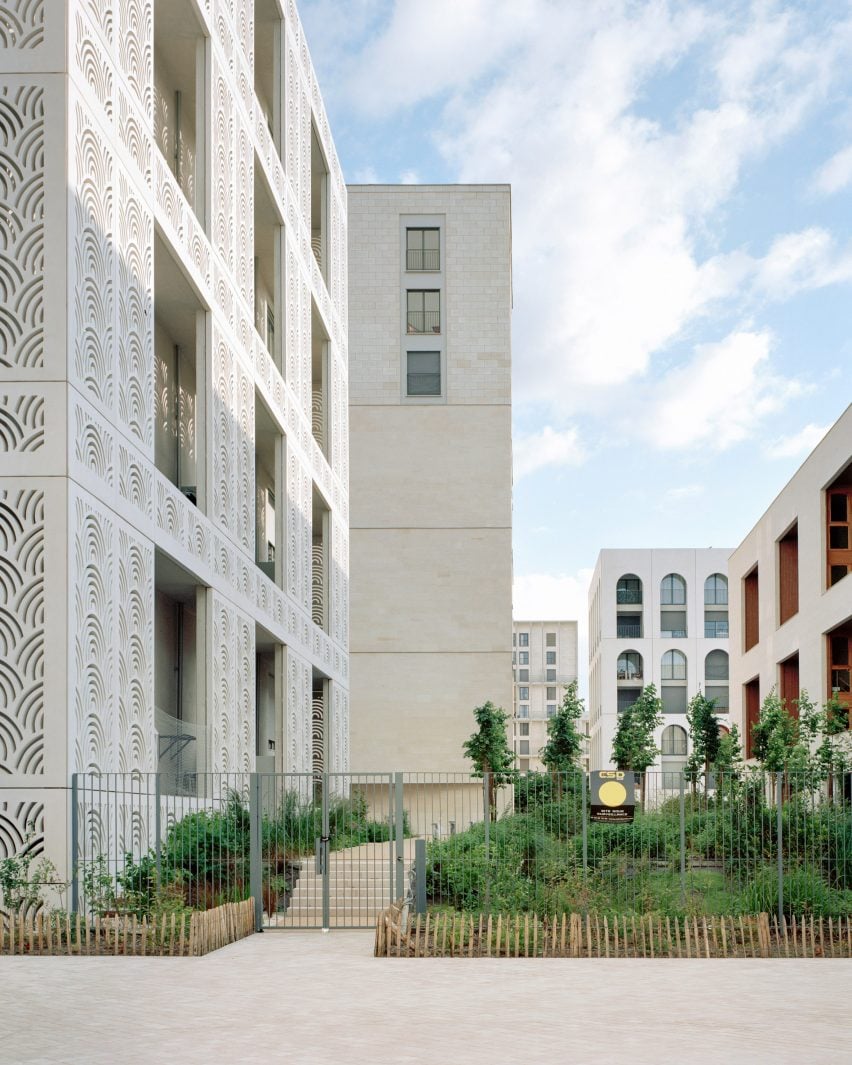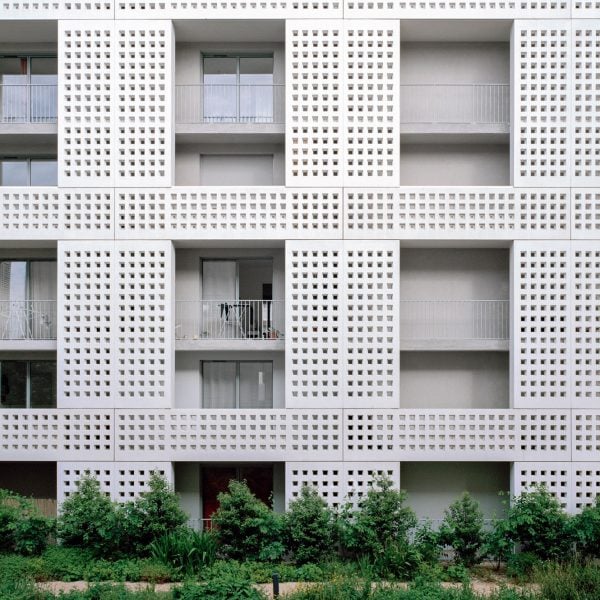French studio Local Architecture Network has completed a series of commercial and residential blocks for the Amédée Saint-Germain district in Bordeaux, using pale stone and arched motifs to complement neighbouring historic structures.
Part of a wider masterplan to modernise Bordeaux, the 31,433-square-metre district of offices, apartments and shops sits between the old Sacre-Coeur neighbourhood and a former industrial area alongside the railway lines of Gare St Jean.
Paris-based Local Architecture Network (LAN) looked to unite the various conditions of these diverse surroundings, achieving the high density required in a way that still felt reminiscent of the city’s layout and architectural styles.

“The new Amédée Saint-Germain district is defined by its existing, distinctive, and unique architectures,” explained the studio.
“The first step in selecting the project’s vocabulary involved searching within this vast ensemble for a common thread capable of spanning history – a motif that could be found equally in the architecture of the historic centre as well as in railway industrial architecture or that of the Sacré Cœur district,” LAN added.
“It’s a process of seeking a common denominator: the shape of a window, the rhythm of a composition, the relationship between voids and solids, the grid.”

LAN divided the masterplan into three strips that run roughly north to south following the line of the adjacent railway tracks, each separated by long streets incorporating planting and courtyards.
Overlooking the railway tracks are the largest blocks of the development, containing a mixture of offices and apartments designed to be “monumental” in feel.

Pared-back facades that reference and scale up the proportions of the city’s neoclassical buildings are finished in pale stone, with motifs including a grid of false windows, balconies framed by perforated stone sections and a block wrapped in thin column-like mullions.
“The railway-facing facade composed of the southeastern part is one of the first images a traveller has of the city, a kind of gateway to Bordeaux,” explained LAN.
“Here, the buildings become abstract, the elements of the language change scale to introduce a form of monumentality.”
To the northwest, facing back towards the city, a series of lower residential blocks along the Rue Amédée has been designed as an interpretation of Bordeaux’s typical townhouses and echoppe, a type of single-storey home.
Each block has been raised above a ground-floor lobby and the row features a diverse range of facade finishes from small square perforations and a cut-out curved motif to a distinctive screen of stacked arches that shades the balconies behind.

In the centre of Amédée Saint-Germain’s two outer strips is a long public boulevard designed around the existing industrial structures, with shops and public spaces positioned amongst former warehouses and given “breathing space” by wide paths.
“Everything is built around this industrial archaeology. From public spaces to functional planning, the enhancement of these railway memories was essential,” said LAN.
“This heritage approach includes both the rehabilitation and showcasing of preserved buildings, as well as the creation of visual openings towards the railway network.”

LAN was founded by Benoit Jallon and Umberto Napolitano in 2002.
Its other projects include a mixed-used urban development in Strasbourg, where the studio created a series of pastel-coloured blocks around a communal garden, and a prison in Nanterre clad in perforated weathering steel.
The photography is by Maxime Delvaux unless otherwise stated.

